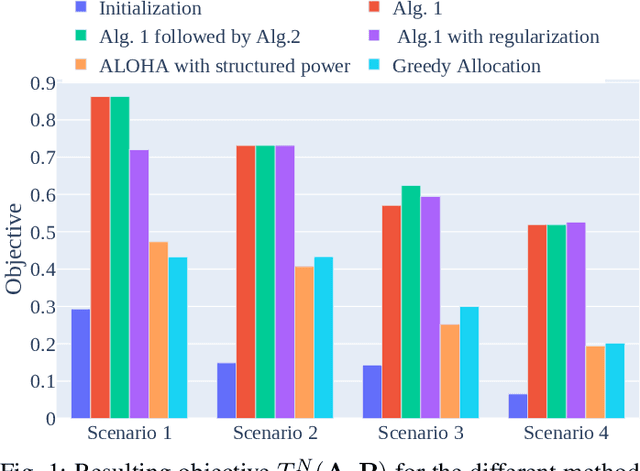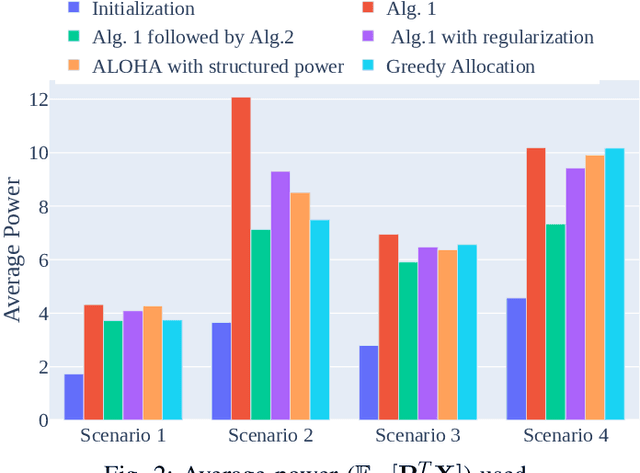Alix Jeannerot
Joint Slot and Power Optimization for Grant Free Random Access with Unknown and Heterogeneous Device Activity
Jul 26, 2024

Abstract:Grant Free Random Access (GFRA) is a popular protocol in the Internet of Things (IoT) to reduce the control signaling. GFRA is a framed protocol where each frame is split into two parts: device identification; and data transmission part which can be viewed as a form of Frame Slotted ALOHA (FSA). A common assumption in FSA is device homogeneity; that is the probability that a device seeks to transmit data in a particular frame is common for all devices and independent of the other devices. Recent work has investigated the possibility of tuning the FSA protocol to the statistics of the network by changing the probability for a particular device to access a particular slot. However, power control with a successive interference cancellation (SIC) receiver has not yet been considered to further increase the performance of the tuned FSA protocols. In this paper, we propose algorithms to jointly optimize both the slot selection and the transmit power of the devices to minimize the outage of the devices in the network. We show via a simulation study that our algorithms can outperform baselines (including slotted ALOHA) in terms of expected number of devices transmitting without outage and in term of transmit power.
Joint Resource-Power Allocation and UE Rank Selection in Multi-User MIMO Systems with Linear Transceivers
Jul 23, 2024



Abstract:Next-generation wireless networks aim to deliver data speeds much faster than 5G. This requires base stations with lots of antennas and a large operating bandwidth. These advanced base stations are expected to serve several multi-antenna user-equipment (UEs) simultaneously on the same time-frequency resources on both the uplink and the downlink. The UE data rates are affected by the following three main factors: UE rank, which refers to the number of data layers used by each UE, UE frequency allocation, which refers to the assignment of slices of the overall frequency band to use for each UE in an orthogonal frequency-division multiplexing (OFDM) system, and UE power allocation/control, which refers to the power allocated by the base station for data transmission to each UE on the downlink or the power used by the UE to send data on the uplink. Since multiple UEs are to be simultaneously served, the type of precoder used for downlink transmission and the type of receiver used for uplink reception predominantly influence these three aforementioned factors and the resulting overall UE throughput. This paper addresses the problem of jointly selecting these three parameters specifically when zero-forcing (ZF) precoders are used for downlink transmission and linear minimum mean square error (LMMSE) receivers are employed for uplink reception.
 Add to Chrome
Add to Chrome Add to Firefox
Add to Firefox Add to Edge
Add to Edge